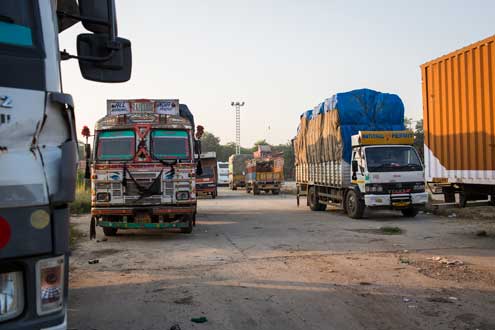By Sagar Prasai
Regional integration in South Asia has remained weak on all fronts. Even in the face of pressing needs, regional cooperation on water and energy, for instance, barely gets the kind of attention that it deserves. On trade, the story is even worse. Intra-regional trade in Asia (as a geographic block) constitutes around 56 percent of the total trade, whereas the South Asian intra-regional trade-share hovers below the five percent mark. If you consider the fact that about 40 percent of the total Asian population actually resides in South Asia, the scale of the anomaly becomes clearer. The mammoth bureaucracies of South Asia, the political leaders who rule the halls of power in South Asia, as well as the highly-organized yet hapless business associations in the South Asian capitals all agree that more needs to be done. Countless Track I and II meetings have been conducted on the subject but the region has never got around to delivering on a few essential pre-conditions that could promote internal trade in the region.
Individual South Asian nations have not been fundamentally averse to global and regional trade agreements. Beginning from South Asia’s own South Asian Free Trade Agreement (SAFTA) to global regimes such as WTO, the South Asian states have signed on the dotted line faster than they have mustered the commitment required to trade freely, including with their immediate neighbors. While the agreements themselves remain stuck at various stages of implementation, there almost appears to be an industry on overdrive dedicated to devising non-tariff barriers (NTBs) in all South Asian countries.
Some of the problems related to non-tariff barriers such as streamlining and harmonizing customs procedures, improving facilitation infrastructure and capacities, and modernizing border points and protocols are already identified. A number of multilateral assistance programs as well have begun to focus on these problems. The technical solutions on which a lot of the current resources are vested, however, do not address the political economy dynamics that generate the most persistent of NTBs. A first set of NTBs in that category relate to the lack of reasonable arrangements for the flow of people and finances in the region. While there are legitimate security concerns to address, governments in the region have not devised adequate measures or acquired enough confidence to trust their own banks, consulates, and border agencies to discern which is a legitimate transaction or visa application and which is not. If people cannot meet or transact freely, they cannot trade freely.
A second set of problems is generated by anti-competition practices employed by importers and wholesalers in the importing countries. Since the system is susceptible to nefarious influences and corruption, importers are able to use the system to maintain monopoly controls and manage import volumes by deploying NTBs on selected exporters and at selected times, almost at will. Typically, this process involves using border control agencies, customs, or quarantine offices to impose undue barriers and intentional delays on the movement of goods. At a more structural level, importers and producers in the import markets also manage to use state and local governments to impose para-tariffs on selected goods. Such practices remain completely under the radar of formal scrutiny but are known to any trader of any significance in the region.
Then there is the pressure control valve called informal trade. When the systemic or intentional NTBs manage to drive the cost of import to a level at which the price competitiveness of the imported merchandise fails to remain viable, informal or illegal routes are opened to push the goods. While there have been several studies on the levels of informal trade in South Asia, the political economy interests that calibrate the routing costs and control the informal routes have not been revealed in entirety. This practice also concurrently supports and promotes the informal transactions in the havala markets. Confronting this complex system of route choices and payment options, including the practice of under-invoicing and over-invoicing employed by importers and exporters to distort supply and prices, requires political will at the national level and a deliberate crack-down on nefarious practices at the sub-national levels.
While policy streamlining, regulatory reform, and infrastructure development all matter immensely, these measures alone will not solve the essential barriers to trade in South Asia. The underlying political economy that thrives in the dysfunctionality of the system cannot be undercut by signing more agreements and treaties. Before we even begin to contemplate what the next steps are to promote and intensify regional trade in South Asia, we need to understand the drivers of dysfunctionality better. The idea behind The SARCist as well has been to provide a South Asian platform to reveal and discuss real-world problems of South Asian integration such that countries in the region can devise informed and pragmatic policy responses to the problems.
This article was first published on the SARCist website, a new initiative of the Centre for Policy Research, New Delhi, India, funded by The Asia Foundation, which aims to provide a space for greater discussion on key issues of relevance on trade and investment in South Asia.
Sagar Prasai is The Asia Foundation’s deputy country representative in Nepal. He can be reached at sagar.prasai@asiafoundation.org. The views and opinions expressed here are those of the individual author and not those of The Asia Foundation.
Source: Asia Foundation










